About this newsletter
All projects and conservation of species mentioned in this newsletter are funded in part by the Indiana Nongame Wildlife Fund. The fund supports over 150 Species of Greatest Conservation Need (SGCN) through habitat management and conservation initiatives.
Why do you donate?
The Division of Fish & Wildlife is seeking donors willing to share their motivation for giving to the Nongame Wildlife Fund. Selected donors may be featured in the story map that has been created to celebrate the 40th anniversary of the Nongame Wildlife Fund. If interested, please email mahayes@dnr.in.gov by Friday, April 1.
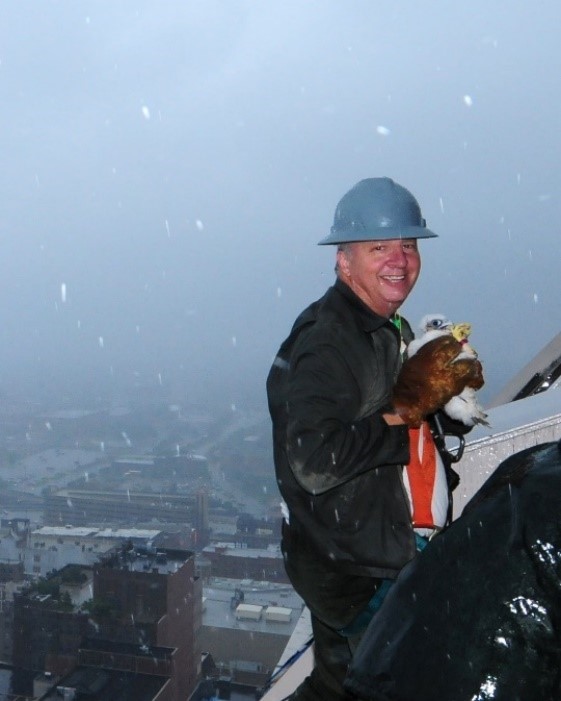 John Castrale, retired DNR ornithologist, holds a peregrine falcon chick on a skyscraper in Indianapolis.
40 years, 40 stories – the fund’s 40th birthday
It's the Indiana Nongame Wildlife Fund’s 40th birthday this year! We are grateful to the donors, partners, and volunteers who have helped the fund achieve so many conservation successes. To commemorate its 40 years of conservation work, we are sharing 40 stories highlighting project successes, partners, donors, biologists, technology advances, and what we’ve learned from the data we collected.
In January, we highlighted the origin of the fund and the long career of John Castrale, retired ornithologist (pictured). In February, we introduced four of the nongame biologists, their career journeys, and fun facts.
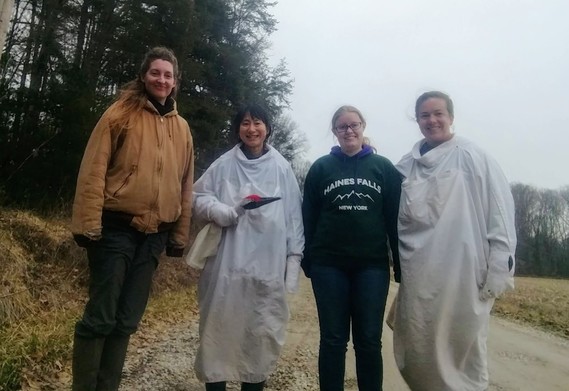 Whooping crane whisperers
The whooping crane is one of the rarest species in the world with only around 850 individuals found globally. Despite this rarity, Indiana provides temporary pit stops for migrating whooping cranes and a winter home to around 30 whooping cranes each year. These birds that migrate or winter in Indiana belong to the eastern migratory population, which was once extirpated (extinct) in the eastern United States. In 2000, efforts to reintroduce migratory whooping cranes to the eastern U.S. began. Due to the tireless efforts of biologists dedicated to the conservation of this species, the population is currently around 80 cranes.
Birds in the eastern migratory population are marked with unique colored band combinations on their legs, allowing biologists to identify individuals from a distance. Some birds also carry satellite or radio transmitters that are used to track migration, but these devices have limited lifespans and must be replaced.
This past year, Indiana DNR ornithologists and whooping crane biologists from the International Crane Foundation successfully captured two whooping cranes and replaced their broken transmitters and old bands. Biologists wore whooping crane costumes to conceal themselves and prevent cranes from becoming familiar with people, which could put them in danger. With the new transmitters, biologists can better track these cranes, which will improve our understanding of crane movements during the winter and the threats cranes face throughout their lives. Indiana DNR plans to continue assisting with capturing and tagging whooping cranes each winter. To support this important work, donate to the Indiana Nongame Wildlife Fund.
You can double your positive impact on whooping cranes by educating friends and family about this species. Keep a distance of at least 100 yards when viewing them (roughly the size of a football field) to minimize disturbing the cranes. If you see any activity that attempts to harm or disturb these rare birds, call the DNR “Turn in a Poacher” hotline at 1-800-TIP-IDNR.
 Catching bats without the catch
Indiana DNR began its acoustic surveys for bats in 2011. This non-invasive method helps biologists monitor bat populations without actually catching the bats. Advances in technology have resulted in equipment that can record echolocation calls, which are used to identify different bat species by their unique echolocation signatures.
Survey protocols for bat survey monitoring are standardized by the North American Bat Monitoring Program (NABat) to allow biologists to monitor bat populations across state and national boundaries and throughout their range. In 2020, Indiana’s volunteers and DNR staff completed 73 mobile surveys across 39 NABat grid cells (survey areas). In 2021, those survey efforts increased to 95 surveys across 63 NABat grid cells. The red squares on the map above show the survey areas.
Our biologists could use your help to increase monitoring efforts in 2022. Landowners willing to survey in areas covered by NABat grid cells can receive acoustic bat detectors for our summer 2022 surveys. If you live in or near one of the survey areas shown on the map and are interested in participating, email helpbats@dnr.IN.gov.
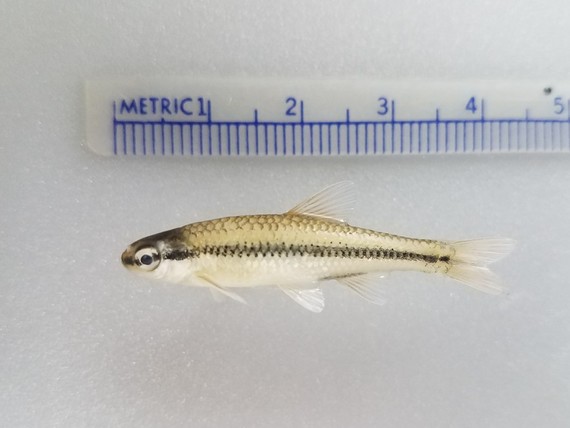 A tiny fish floating under the radar
|
Most Hoosiers have probably never heard of or seen one of Indiana’s rarest fish species, the pugnose shiner. It is one of five minnow species currently on Indiana’s list of Species of Greatest Conservation Need. There are more than 50 different species of the minnow family (Cyprinidae) swimming in Indiana’s waters. The pugnose shiner is one of the smallest and most elusive.
Rarely exceeding 2 inches in length, the pugnose shiner exclusively inhabits lakes in the northern part of Indiana. It resembles another, more common northern Indiana lake inhabitant, the blackchin shiner. Both species have a dark stripe along their sides that extends to the tip of the snout and onto the chin. The pugnose shiner has a small, angled (almost vertical) mouth, whereas the blackchin shiner has a much larger, less angled mouth. Both species inhabit thick stands of submerged aquatic vegetation.
While historically known to be found in several lakes, the pugnose shiner has recently been detected in only one lake in Kosciusko County. The reasons for the species’ decline are not well understood. Some initial surveys for pugnose shiner in the fall of 2021 were unsuccessful in finding any new populations. An attempt will be made this upcoming field season to survey in the spring, summer, and fall to determine when the pugnose shiner might be most easily detected. While surveys to date have employed seining techniques, other methods may be investigated. Support monitoring efforts by donating to the Indiana Nongame Wildlife Fund.
|
Combing the landscape for Kirtland's snakes
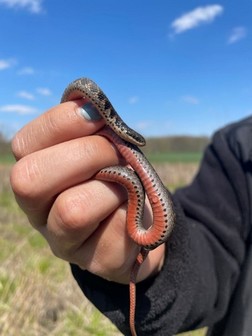
During 2021, DNR biologists began a project with Sycamore Land Trust to search for state endangered Kirtland’s snakes at sites in southern Indiana. The effort was part of an ongoing collaboration to understand the amphibians and reptiles at nature preserves in Monroe and Brown counties—with a focus on finding the endangered snakes. To locate the snakes, pieces of sheet metal and plywood were placed on the ground in lowland areas with moist soils and checked intermittently throughout the year. The use of metal or wood “coverboards” is a standard sampling technique for locating snakes during biological surveys. The boards provide shelter and help maintain the moist and damp conditions preferred by Kirtland’s snakes. Additionally, the metal coverboards may heat up in the sun, providing snakes a place to warm themselves on cool spring days. Kirtland’s snakes were observed at one of the preserves, and they were the second most frequently encountered snake species after the common gartersnake. Both adults and juveniles were observed.
The Kirtland’s snake is a small, secretive species that prefers moist soil and open canopy habitats. They can be identified by their pink belly, which is lined with two rows of small, dark spots. Despite being uncommon, the snakes are known to persist in highly developed areas and are frequently reported from the Indianapolis and New Albany areas. In natural settings, Kirtland’s snakes may be found in moist meadows, marshes, and river floodplains. They generally live underground in crayfish burrows or beneath cover where they feed on earthworms and slugs.
The snakes have been reported from several new areas in the state during recent years, and DNR is evaluating their Indiana status as new information becomes available. Think you’ve seen a Kirtland’s snake? Email a photo to herpsurveys@dnr.IN.gov.
|
Help Indiana’s nongame and endangered wildlife
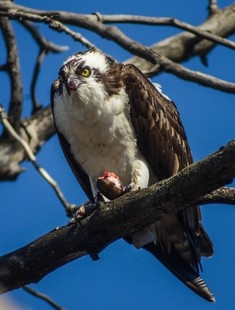
Want to help Indiana’s nongame and endangered wildlife? You can make a difference by donating in one of three ways:
1.On your Indiana state taxes. If filing with paper forms, use Schedule 5/Schedule IN-Donate. This video outlines the steps for filling out the form. If donating through online tax programs, you will be prompted to donate at the end of filing. If filing using a tax preparer, direct your preparer to the Schedule 5/IN-Donate (also referred to as IN Schedule 5-Credits).
2.Online with Visa, MasterCard or Discover. The form is secure.
3.Via mail. Fill out this form and send it with your check or money order to: Indiana Nongame Wildlife Fund; 402 West Washington Street, Room W273, Indianapolis, IN 46204
For every $50 donated, Indiana’s wildlife receives an additional $93 in federal funds!
|
Recent news releases
|